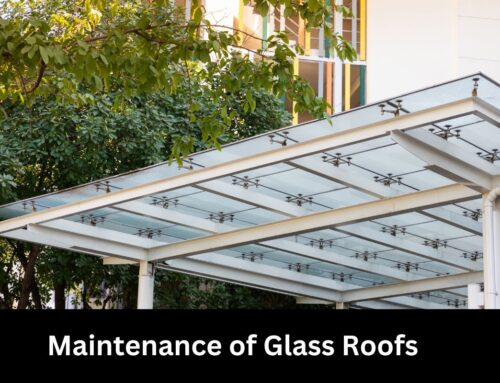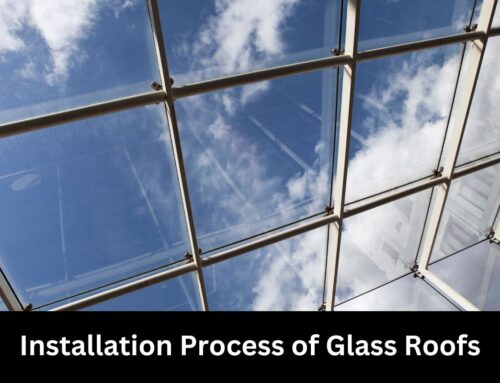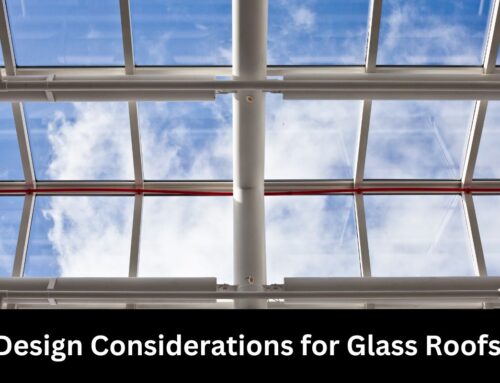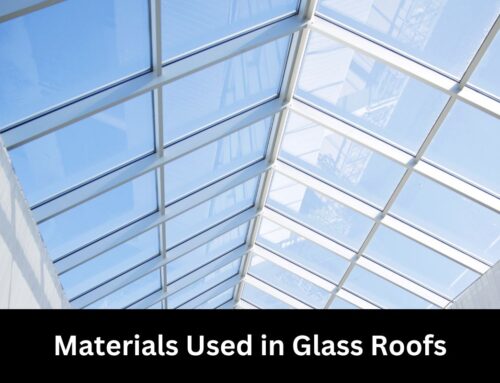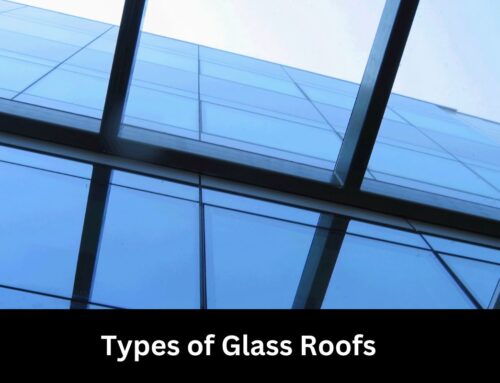Table of Contents
Did you know that glass roofs are becoming increasingly popular in modern architecture? In fact, according to a recent survey, the use of glass roofs has increased by 30% in the past decade.
While they offer a stunning and unique aesthetic, it is crucial to prioritize safety when it comes to these structures. Glass roofs require specific safety measures to ensure the well-being of occupants and prevent accidents.
This article will provide you with a comprehensive guide on how to enhance the safety of your glass roof. From using tempered glass for enhanced durability to regular maintenance and inspections, installing safety barriers, considering impact resistance, and educating occupants on safety guidelines, we will cover all the necessary precautions to ensure a secure and worry-free experience.
So, let’s dive in and explore these safety measures in detail to protect yourself and your loved ones while enjoying the beauty and openness that glass roofs bring to your space.
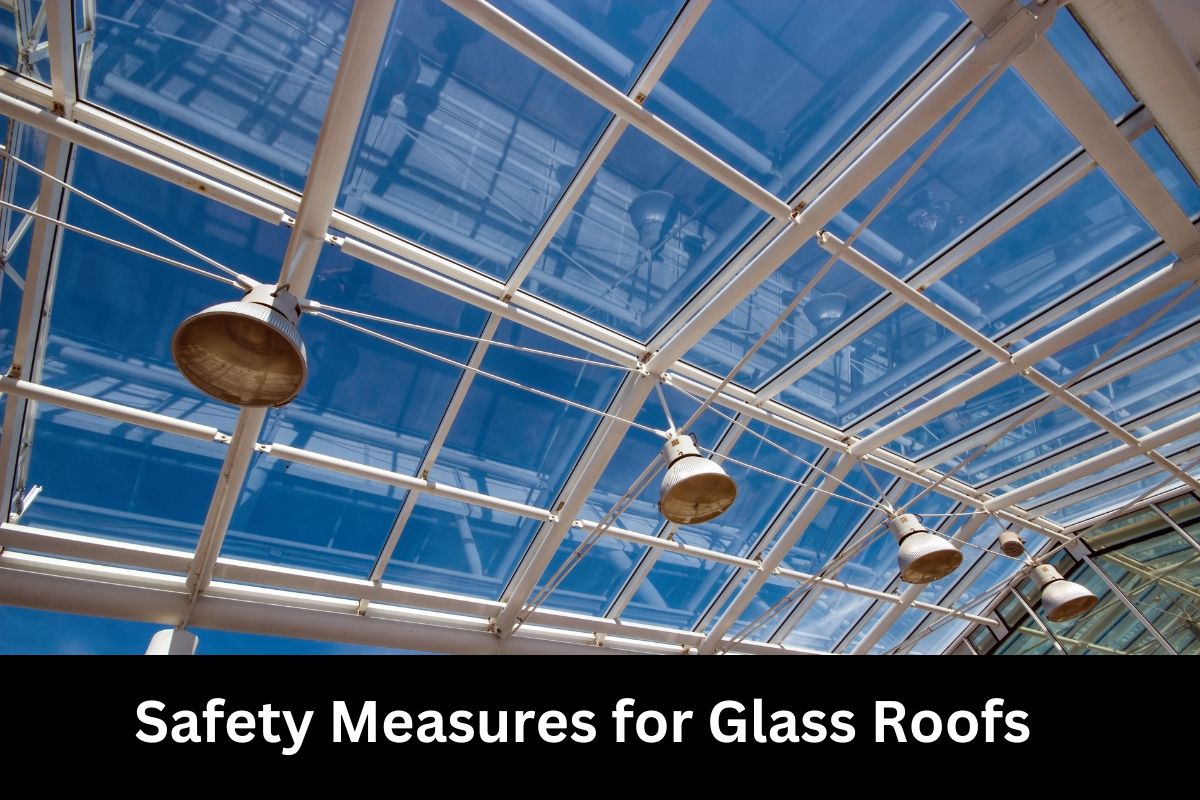
Key Takeaways
- Regular maintenance and inspections are crucial for the safety and longevity of glass roofs.
- Installing safety barriers is essential to prevent falls and objects from falling onto the glass surface.
- Impact-resistant glass options such as laminated glass, tempered glass, polycarbonate glass, wire glass, and acrylic glass should be considered for enhanced safety.
- Educating occupants on safety guidelines, including avoiding placing heavy objects on the glass roof and refraining from climbing or walking on it, is important for preventing accidents.
Use Tempered Glass for Enhanced Durability and Safety
Using tempered glass for your glass roof is a must-have for ensuring not only superior durability, but also the ultimate peace of mind. Tempered glass is specially treated to increase its strength and resistance to impact, making it up to four times stronger than regular glass.
This means that it can withstand high winds, heavy snowfall, and even hailstorms without shattering into dangerous shards. In the event of a break, tempered glass fractures into small, rounded pieces that are less likely to cause serious injury.
The process of tempering involves heating the glass to a high temperature and then rapidly cooling it. This causes the outer surfaces of the glass to cool faster than the core, creating a state of compression that gives tempered glass its strength. Additionally, tempered glass is more resistant to temperature changes, reducing the risk of cracking due to thermal stress.
To ensure the safety and longevity of your glass roof, it is important to regularly maintain and inspect it. This includes checking for any signs of damage, such as cracks or chips, and addressing them promptly. Regular cleaning is also essential to remove any debris that could potentially weaken the glass or obstruct its structural integrity.
By combining the use of tempered glass with regular maintenance and inspections, you can enjoy a beautiful and safe glass roof for years to come.
Regular Maintenance and Inspections
Regular maintenance and inspections are crucial for ensuring the longevity and safety of your glass roof. It’s important to schedule regular inspections to identify any potential issues or damage that may need to be addressed.
Additionally, be sure to clean and maintain your glass roof properly by regularly removing debris, checking for any signs of wear or damage, and following manufacturer guidelines for cleaning products and techniques.
By taking these steps, you can ensure that your glass roof remains in optimal condition and minimize the risk of any accidents or further damage.
Importance of regular inspections
By routinely inspecting glass roofs, you can keep your family safe from potential hazards and ensure the longevity of your beautiful overhead views. Regular inspections are crucial for identifying any cracks, chips, or loose panels that could compromise the structural integrity of your glass roof. Here are some important reasons why regular inspections are vital:
- Detecting small issues early can’t prevent them from becoming major problems.
- Inspections allow you to identify any leaks or water damage before they cause further harm.
- Regular checks ensure that all seals and joints are intact, preventing water infiltration.
- Inspections help you spot any signs of wear and tear, such as corrosion or fading.
- Regular maintenance can help maintain the energy efficiency of your glass roof.
By staying proactive and addressing any issues promptly, you can enjoy a safe and secure glass roof for years to come.
Now, let’s move on to cleaning and maintenance tips.
Cleaning and maintenance tips
To keep your glass roof in top shape, it’s important to follow these tips for cleaning and maintenance.
First, make sure to clean the glass regularly using a mild soap and water solution. Avoid using harsh chemicals or abrasive materials that could scratch the surface. Use a soft cloth or sponge to gently wipe away dirt and grime. Don’t forget to clean the edges and frames as well.
Next, inspect the glass for any signs of damage, such as cracks or chips, and repair them immediately to prevent further issues. Additionally, keep the surrounding area clear of debris and fallen branches that could potentially damage the glass.
Lastly, consider applying a protective coating or film to the glass to enhance its durability and resistance to scratches. By following these maintenance tips, you can ensure the safety and longevity of your glass roof.
In the next section, we will discuss how to install safety barriers to further enhance the security of your glass roof.
Install Safety Barriers
Imagine standing under a glass roof that stretches out above you, and feeling completely secure knowing that safety barriers are in place to protect you from any potential accidents. Installing safety barriers is an essential safety measure for glass roofs, ensuring the well-being of individuals underneath.
These barriers act as a physical barrier, preventing accidental falls or objects from falling onto the glass surface. They’re typically made of strong, durable materials such as stainless steel or tempered glass, capable of withstanding various weather conditions and impacts.
When it comes to installing safety barriers, it’s crucial to consider their design and placement. The height and strength of the barriers should meet safety standards and regulations, providing adequate protection. The barriers should be securely anchored to the structure of the glass roof, ensuring stability and preventing any unintended movements. Additionally, the gaps between the barriers should be carefully designed to prevent small objects from passing through while maintaining an unobstructed view.
By installing safety barriers, you can create a safe environment under your glass roof, allowing you to enjoy the natural light and beauty without worrying about potential accidents. However, safety measures don’t stop here. Consider impact resistance as the next step to further enhance the safety of your glass roof.
Consider Impact Resistance
When considering the impact resistance of glass roofs, it’s important to prioritize safety and durability. You have several options for impact-resistant glass. One option is laminated glass, which consists of multiple layers of glass with an interlayer that holds the glass together when shattered. This offers excellent impact resistance and protection against flying debris. Another option is tempered glass. Additionally, you can also consider polycarbonate panels.
Importance of impact resistance for glass roofs
Glass roofs, with their ability to withstand impact and remain intact, are as tough as nails and offer an added layer of safety. When it comes to safety measures for glass roofs, impact resistance is of utmost importance.
Glass roofs are constantly exposed to various elements, such as hail, falling branches, or even accidental collisions. Without impact resistance, these roofs would be vulnerable to shattering, causing potential harm to people below and costly damage to property. By investing in impact-resistant glass, you ensure that your glass roof can withstand high-force impacts without breaking into dangerous shards. This provides peace of mind, knowing that your roof can handle unexpected events and keep you protected.
Now, let’s explore the options for impact-resistant glass, which offer even more robust protection for your glass roof.
Options for impact-resistant glass
When it comes to protecting your glass roof, ensuring it has impact resistance is of utmost importance. But what options do you have for impact-resistant glass? Let’s explore.
In the table below, you will find five popular options for impact-resistant glass, along with their specific features and benefits:
| Glass Option | Features | Benefits |
|---|---|---|
| Laminated Glass | Consists of multiple layers with a strong interlayer | Provides excellent resistance to impact and prevents shattering |
| Tempered Glass | Heated and cooled rapidly during production | Four times stronger than regular glass and breaks into small, harmless pieces |
| Polycarbonate Glass | Made from a durable thermoplastic material | Highly resistant to impact, shatterproof, and offers UV protection |
| Wire Glass | Contains wire mesh embedded within the glass | Retains glass fragments when shattered, reducing the risk of injury |
| Acrylic Glass | Lightweight and shatter-resistant plastic | Offers impact resistance, clarity, and is less expensive than glass |
By incorporating any of these options into your glass roof, you can enhance its safety and protect against potential hazards. Now, let’s move on to educating occupants on safety guidelines for glass roofs.
Educate Occupants on Safety Guidelines
To ensure everyone’s safety, it’s important to familiarize occupants with the safety guidelines for glass roofs. By educating occupants on safety guidelines, you can reduce the risk of accidents and promote a safe environment. Here are some key points to include when educating occupants:
- General Safety Guidelines:
- Advise occupants to avoid placing heavy objects on the glass roof as this can cause stress and potential damage.
- Instruct them to refrain from climbing or walking on the glass roof, as it isn’t designed to support weight and may crack or break.
- Emergency Procedures:
- Inform occupants about emergency exit routes in the event of a fire or other emergencies. Emphasize the importance of not using the glass roof as an exit.
- Maintenance and Inspection:
- Stress the significance of regular maintenance and inspection of the glass roof by trained professionals to identify and address any potential issues before they escalate.
- Weather Conditions:
- Educate occupants on the impact of severe weather conditions on the glass roof. Encourage them to seek shelter in a safe location during storms or hail.
By providing occupants with these safety guidelines, you empower them to make informed decisions and contribute to the overall safety of the building. Remember, safety should always be a top priority when it comes to glass roofs.
Frequently Asked Questions on Safety Measures for Glass Roofs
How long does tempered glass typically last before it needs to be replaced?
Tempered glass, the superhero of glass, typically lasts for decades before replacement is needed. Its strength and durability make it resistant to damage, ensuring long-term safety for your glass roof.
Are there any specific guidelines for cleaning and maintaining glass roofs?
To clean and maintain glass roofs, follow these guidelines. Use a soft cloth or sponge with mild soapy water for cleaning. Avoid abrasive cleaners and tools that could scratch the glass. Regularly inspect for any damage or cracks and address them promptly to ensure safety.
What are the recommended safety barriers to install for glass roofs?
To ensure safety, it is recommended to install safety barriers for glass roofs. These barriers can include guardrails, skylight screens, or safety nets. They provide a physical barrier to prevent falls and protect individuals from potential accidents.
Can you provide examples of impact-resistant glass options for glass roofs?
Sure, there are several impact-resistant glass options for glass roofs that provide enhanced safety. Some examples include laminated glass, tempered glass, and polycarbonate glazing systems, all of which are designed to withstand strong impacts and minimize the risk of breakage.
What are some important safety guidelines that occupants should be aware of when using a glass roof?
When using a glass roof, it’s important to follow safety guidelines. Ensure the glass is impact-resistant and properly installed. Regularly inspect for cracks or damage, and avoid placing heavy objects on the roof. Maintain a safe distance to prevent accidents.
Conclusion
To ensure the utmost safety for your glass roof, it’s imperative to follow a few key measures.
- Opt for tempered glass, as it enhances both durability and safety.
- Regular maintenance and inspections are vital to identify any potential issues or weaknesses.
- Installing safety barriers will offer an added layer of protection.
- Consider opting for impact-resistant glass for extra security.
- Lastly, educating occupants on safety guidelines is crucial.
Following these safety measures will provide you with peace of mind that your glass roof is safeguarded against any mishap, making it as secure as Fort Knox.
Related Articles

